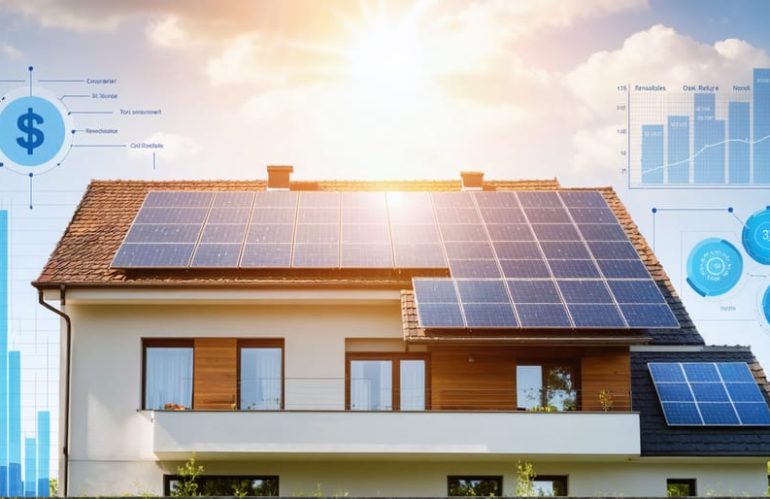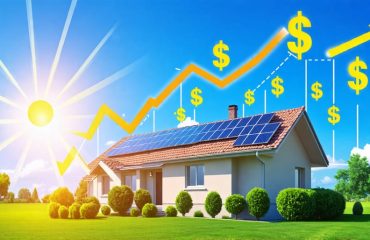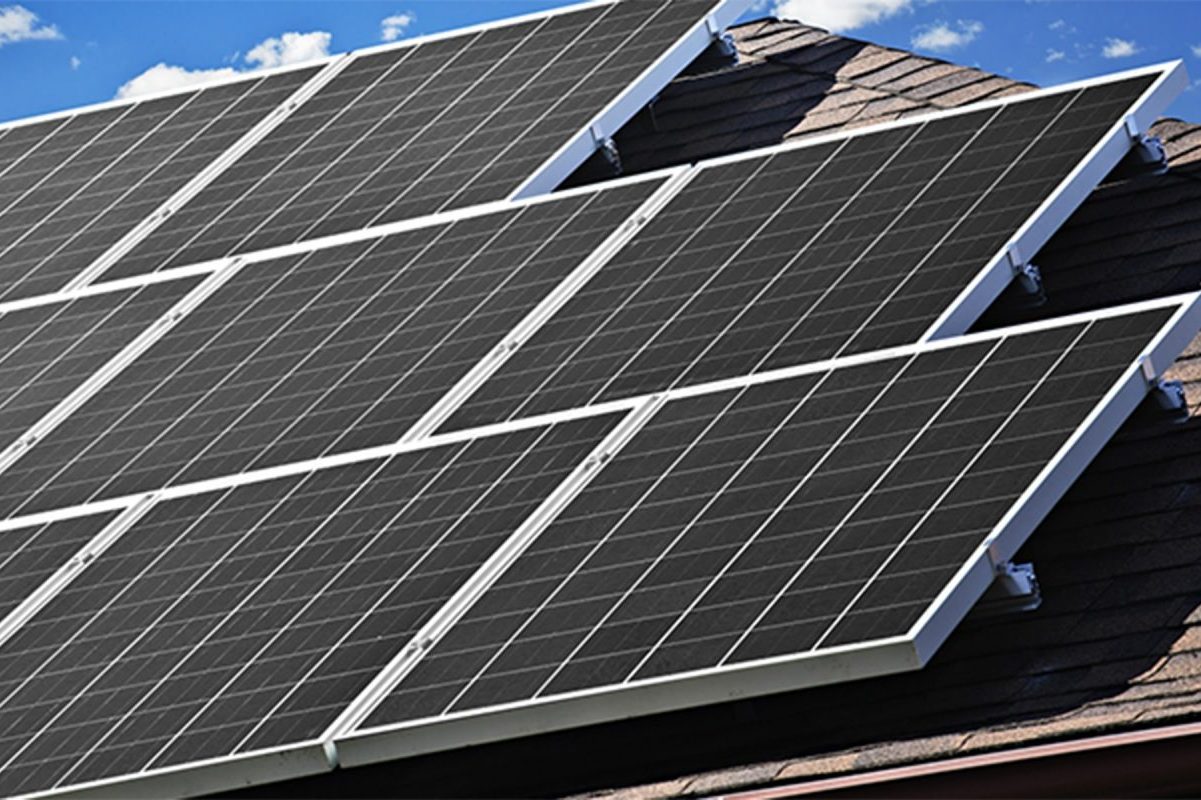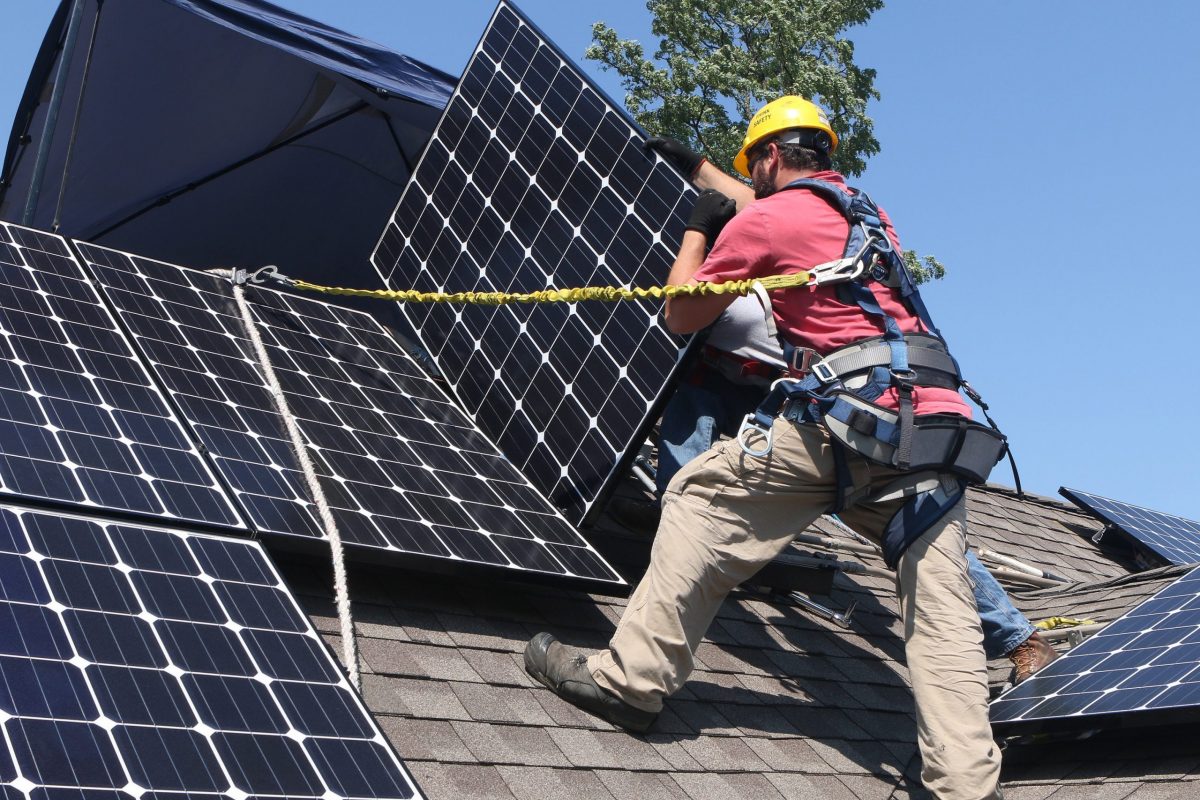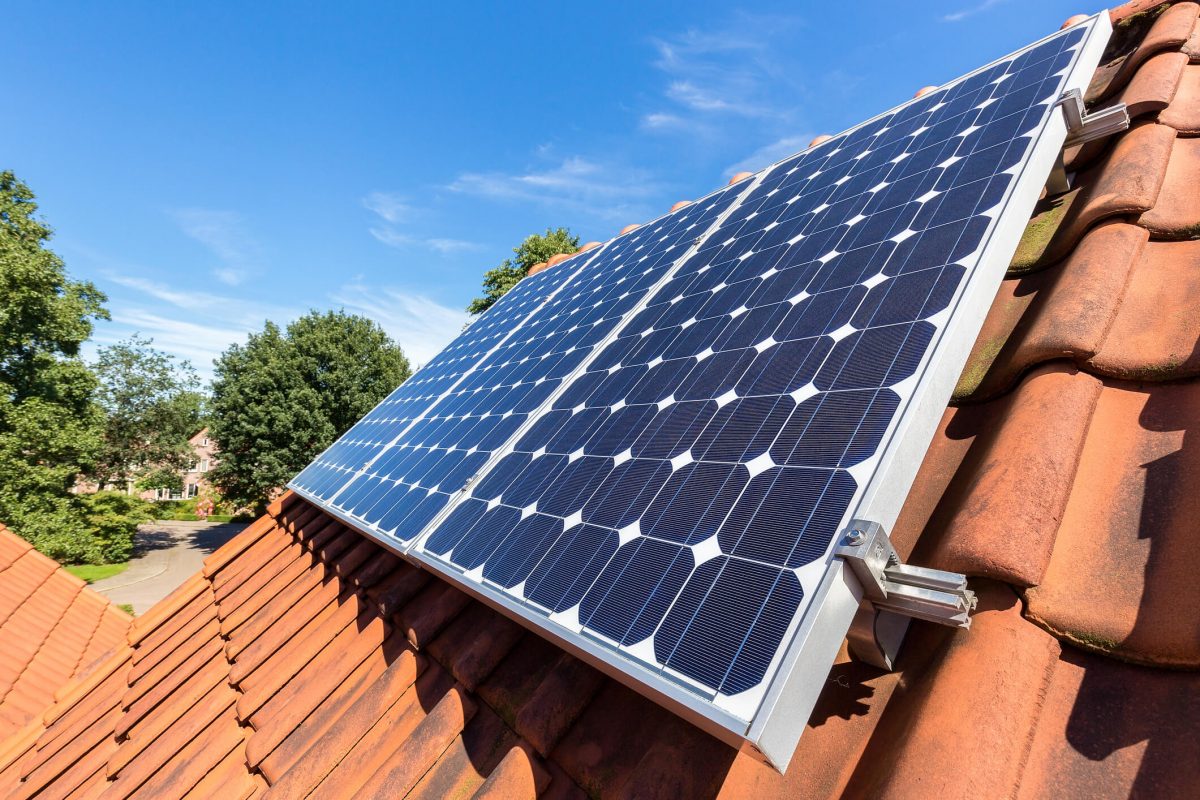Solar energy investment has emerged as one of the most promising financial opportunities of our time, offering both environmental benefits and substantial returns. As energy costs continue to rise and technology prices fall, homeowners are discovering that solar installations can deliver average returns of 10-20% annually through reduced utility bills and government incentives. The combination of federal tax credits, state rebates, and net metering programs has created an unprecedented moment where solar investment makes financial sense for most American households.
Beyond immediate cost savings, solar installations typically increase property values by 4-6%, making them a smart long-term investment in your home’s future. Modern solar technology has evolved to offer 25-30 year warranties, ensuring decades of reliable energy production with minimal maintenance costs. Whether you’re looking to reduce your carbon footprint, protect against rising energy costs, or simply make a sound financial investment, solar energy presents a unique opportunity to achieve multiple goals simultaneously.
This guide will explore the essential factors to consider before investing in solar power, helping you understand the costs, benefits, and potential returns that make solar energy an increasingly attractive investment option for homeowners.
The True Cost of Solar Panel Investment
Initial Investment Breakdown
Understanding the solar panel installation costs is crucial for making an informed investment decision. The initial investment typically breaks down into three main categories: equipment, installation labor, and permits.
The equipment costs usually account for about 50-60% of your total investment. This includes solar panels ($200-400 per panel), inverters ($1,000-2,000), mounting hardware ($500-700), and wiring components ($400-600). Premium panels with higher efficiency ratings will cost more but often deliver better long-term value.
Installation labor typically represents 30-35% of the total cost. This covers professional design services, structural roof assessment, actual installation work, and system testing. Working with certified installers ensures proper setup and maintains warranty validity.
The remaining 10-15% goes toward permits, inspections, and interconnection fees. These costs vary significantly by location, ranging from $400 to $2,500. Some municipalities offer expedited permitting for solar installations, potentially reducing these expenses.
For an average 6kW residential system, homeowners can expect total costs between $15,000 and $25,000 before incentives. Remember, federal tax credits currently cover 30% of the total system cost, and many states offer additional incentives that can significantly reduce your out-of-pocket expenses.
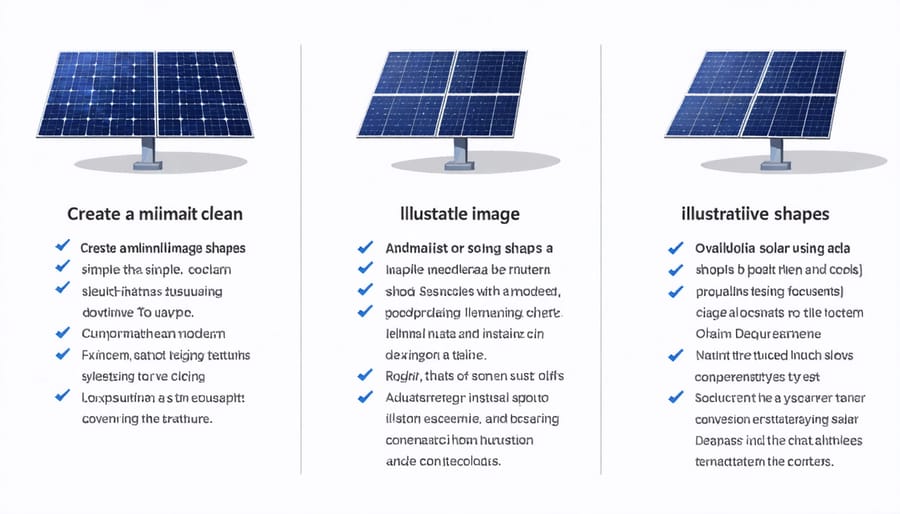
Available Tax Incentives and Rebates
The federal government currently offers substantial solar tax incentives through the Investment Tax Credit (ITC), allowing homeowners to deduct 30% of their solar installation costs from their federal taxes. This incentive is guaranteed through 2032, making now an ideal time to invest in solar energy.
State-level incentives vary significantly but can provide additional savings through tax credits, rebates, and performance-based incentives. For example, many states offer property tax exemptions for the added home value from solar installations, while others provide cash rebates ranging from $500 to $5,000.
Local utilities often supplement these incentives with their own programs, including net metering policies that credit homeowners for excess energy production. Some utility companies offer performance-based incentives, paying homeowners for each kilowatt-hour their system generates.
Many municipalities also provide local tax incentives and expedited permit processing for solar installations. Solar Renewable Energy Credits (SRECs) are available in certain states, allowing homeowners to earn additional income by selling credits for the clean energy their system produces.
Combined, these incentives can reduce the initial investment by 50% or more, significantly shortening the payback period for your solar installation. Remember to consult with a qualified solar installer to understand which incentives are available in your area, as programs and availability can change.
Long-Term Financial Benefits
Monthly Energy Savings
Understanding your monthly energy savings with solar panels is straightforward and can be a game-changer for your household budget. The average American home can save between $100 and $200 per month on electricity bills after installing solar panels, though exact amounts vary based on location, energy consumption, and system size.
To calculate your potential savings, first review your current monthly electricity bills. Most households use around 900 kWh per month, costing approximately $115 at the national average rate of 13 cents per kWh. A properly sized solar system can offset 70-90% of this usage, resulting in significant monthly savings.
Net metering adds another layer of savings by allowing you to earn credits for excess energy your system produces. During sunny days, your panels often generate more power than needed, and this surplus is sent back to the grid. Your utility company credits your account for this contribution, further reducing your monthly bills. In many cases, these credits can offset nighttime usage or periods of lower solar production.
Real-world example: A 6kW solar system in California typically produces about 720 kWh per month. If your monthly consumption is 900 kWh, you’d only need to purchase 180 kWh from the grid. At California’s average rate of 22 cents per kWh, this reduces your monthly bill from $198 to approximately $40, saving you $158 each month.
Remember that these savings compound over time, especially as utility rates continue to rise. Many homeowners find their systems pay for themselves within 5-7 years through these monthly savings alone.
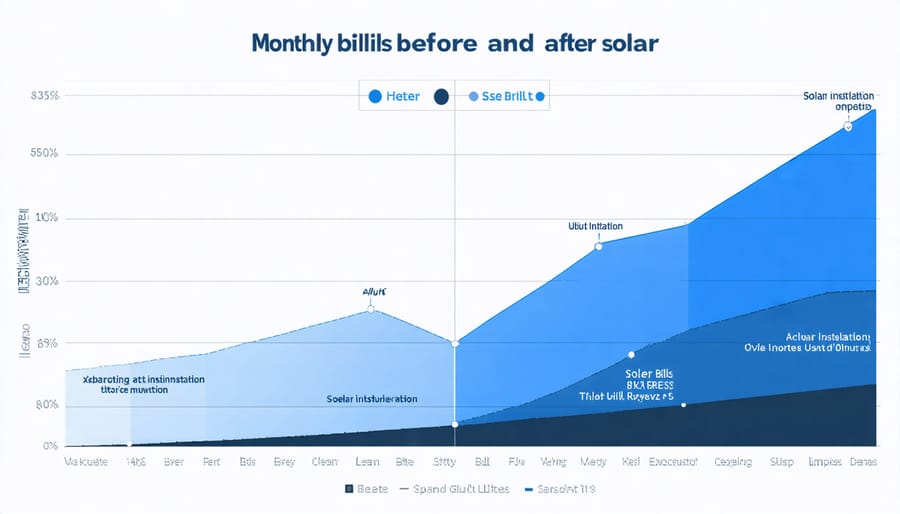
Property Value Increase
Installing solar panels can significantly increase your home’s value, making it a smart investment beyond just energy savings. Recent studies show that homes with solar installations typically sell for 4.1% more than comparable properties without solar systems. For an average-valued home of $300,000, this translates to a premium of around $12,300.
The value boost varies by location, with sunny states often seeing higher premiums. Additionally, newer installations tend to command better returns, as potential buyers recognize the remaining lifetime value of the system. Solar-equipped homes also typically sell 20% faster than those without, indicating strong market demand for energy-efficient properties.
Several factors contribute to this increased property value. First, buyers recognize the immediate benefit of lower electricity bills. Second, modern homebuyers increasingly prioritize sustainable features, making solar panels an attractive selling point. Third, well-maintained solar systems often come with transferable warranties, providing additional peace of mind to future owners.
Real estate agents report that solar homes are particularly appealing to millennials and environmentally conscious buyers, who make up a growing segment of the housing market. The combination of reduced operating costs and environmental benefits creates a compelling value proposition that resonates with modern homebuyers.
To maximize property value benefits, homeowners should maintain proper documentation of their solar installation, including warranty information, performance data, and maintenance records. This information helps potential buyers understand the system’s value and can facilitate a smoother sales process.
Timeline to Return on Investment
Payback Period Analysis
Understanding the payback period for your solar investment is crucial for making an informed decision. When calculating solar panel ROI, several key factors influence how quickly you’ll recoup your initial investment.
The average payback period for residential solar installations typically ranges from 5 to 8 years, though this can vary significantly based on your location, energy consumption, and local utility rates. Homeowners in areas with higher electricity costs and abundant sunshine often see faster returns on their investment.
Key factors affecting your payback timeline include:
– Initial installation costs and available incentives
– Local electricity rates and annual rate increases
– Your home’s energy consumption patterns
– Regional solar production potential
– System maintenance requirements
Many homeowners are pleasantly surprised to discover that modern solar installations often pay for themselves more quickly than expected, thanks to improved technology efficiency and declining installation costs. Additionally, federal tax credits, state incentives, and local rebates can significantly reduce your initial investment, accelerating the payback period.
Remember that while the payback period is important, the benefits of solar extend far beyond this timeline. Once your system is paid off, you’ll continue to enjoy free electricity for many years, potentially saving tens of thousands of dollars over the system’s lifetime.
Long-Term Financial Projections
When looking at solar energy as a long-term investment, the financial outlook is overwhelmingly positive. Over a 25-year period, homeowners can expect to see substantial returns on their initial investment through reduced electricity bills and various incentives. The average solar panel system maintains 85% of its efficiency even after 25 years, ensuring consistent energy production and savings throughout its lifetime.
Most homeowners break even on their solar investment within 5-7 years, after which the energy savings become pure profit. Taking into account the average annual electricity inflation rate of 2.5%, a typical household can save between $20,000 and $50,000 over the system’s lifetime, depending on their location and energy consumption patterns.
The financial benefits extend beyond direct energy savings. Solar homes typically sell 20% faster and for 4-6% more than non-solar properties. Additionally, many states offer property tax exemptions for solar installations, meaning your home’s increased value won’t result in higher property taxes.
Modern solar panels come with comprehensive warranties, usually 25 years or more, protecting your investment against manufacturing defects and performance issues. When combined with minimal maintenance costs – typically just annual cleaning and occasional inspections – solar energy proves to be one of the most reliable and profitable long-term investments for homeowners.
With utility rates continuing to rise and solar technology becoming more efficient, the long-term financial advantages of solar energy are expected to grow even more favorable in the coming decades.
Maximizing Your Solar Investment
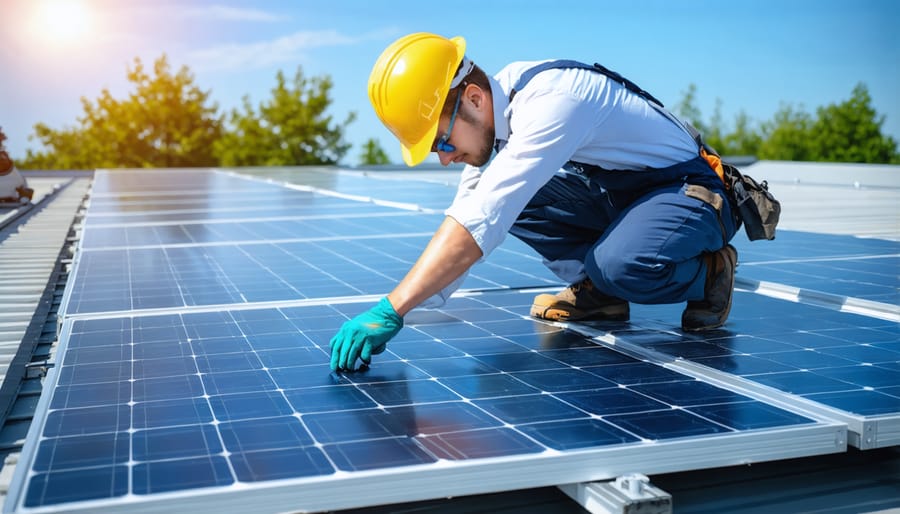
Maintenance and Efficiency Tips
Regular maintenance is key to maximizing your solar investment’s performance. Clean your panels every 3-6 months using plain water and a soft brush to remove dust, leaves, and bird droppings. In areas with heavy snowfall, use a specialized solar panel rake to clear snow accumulation. While cleaning, inspect for any visible damage or loose connections.
Monitor your system’s performance through your inverter display or mobile app. A sudden drop in energy production could indicate an issue requiring professional attention. Keep trees and bushes trimmed to prevent shading, as even partial shade can significantly reduce panel efficiency.
Consider scheduling annual professional inspections to ensure optimal performance. Technicians can check electrical connections, mounting hardware, and system components for potential issues before they become problems.
To maximize efficiency, use major appliances during peak sunlight hours when your system generates the most power. Installing a smart home energy monitor can help you track and optimize your energy consumption patterns, ensuring you get the most value from your solar investment.
Remember, well-maintained solar panels can last 25-30 years while maintaining over 80% of their original efficiency.
Future-Proofing Your Investment
Investing in solar energy isn’t just about today’s benefits – it’s about preparing for tomorrow’s opportunities. Modern solar systems are designed with upgradeability in mind, allowing you to expand your system as your energy needs grow. Whether you’re planning to add an electric vehicle, increase your living space, or adopt new energy-consuming technologies, your solar installation can evolve with you.
Most current solar panels come with 25-year warranties and are built to last even longer. The modular nature of solar systems means you can add more panels or upgrade your inverter without replacing the entire system. Smart monitoring systems provide real-time performance data and often receive software updates that improve efficiency and add new features over time.
To maximize future adaptability, consider choosing a slightly larger inverter than currently needed and installing extra conduit runs during initial setup. This foresight can significantly reduce the cost of future expansions. Working with your installer to create a growth plan ensures your system can accommodate technological advances and changing energy needs while maintaining optimal performance.
Investing in solar energy represents more than just an environmental choice – it’s a strategic financial decision that continues to pay dividends long into the future. As energy costs rise and technology improves, solar installations are becoming increasingly attractive for homeowners seeking both financial stability and environmental responsibility.
The data speaks for itself: homeowners typically see a return on investment within 5-7 years, followed by decades of reduced energy costs. When combined with federal tax incentives, state rebates, and the increased property value solar adds to your home, the long-term financial benefits become even more compelling.
But perhaps the most valuable aspect of solar investment is the peace of mind it provides. By generating your own clean energy, you’re not just reducing your carbon footprint – you’re taking control of your energy future and protecting yourself against rising utility costs.
The time to act is now. With current incentives at historic highs and installation costs at record lows, there’s never been a better moment to embrace solar energy. Whether your primary motivation is financial savings, environmental impact, or energy independence, solar investment offers a unique opportunity to achieve all three.
Take the first step toward energy independence today by exploring your solar options. Your future self – and the planet – will thank you for making this smart, sustainable investment.

